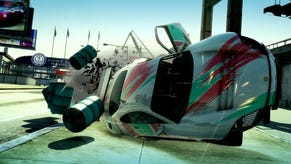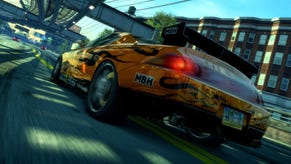Burnout Paradise Remastered is more than just a PC port
Digital Foundry finds a wealth of upgrades.
It's presented in pristine, native 4K on Xbox One X, yet despite the vast resolution increase over its debut outing on last-gen consoles, Burnout Paradise looks and plays just as you remember it. In this respect it's a remaster done right. There are enhancements - many of them in fact, as you shall see - but it's all in service of adapting the original experience to sit nicely on a new, higher precision medium. And in a world of freebie X-enhanced 360 titles and the existing PC version available on Origin for just £5, that's a good thing. The key takeaway here is that Burnout Paradise Remastered is more than just a port.
To put that to test, we stacked up the new release against the best available legacy version - Criterion's original PC release. It was always light on system resources back in the day, and that translates well into the current era - Nvidia's bargain basement GTX 1050 can comfortably run this at maxed settings or close to it at 1440p - but it does have some issues. First and foremost amongst them is a broken ambient occlusion implementation that introduces some bad aliasing artefacts, particularly noticeable around powerlines. The remaster not only fixes this but substantially improves the entire SSAO effect.
In fact, image quality is refined accordingly all around - native resolution is confirmed at 3840x2160 on Xbox One X, with a full 1920x1080 on the base Xbox One, and while there isn't blanket coverage, the MSAA of the PC version is swapped out for AMD's hardware-level EQAA, set to 4x. Beyond that, while the geometry of the original game (and seemingly most of its LODs) are a match for the vanilla PC experience at its best, developer Stellar Entertainment has embarked on a range of subtle, but effective upgrades to the original game. Most noticeable is the artwork: core assets are now of a significantly higher resolution, with ground art and building textures the most obvious beneficiaries. A bulk of its art seem to be retouched here, right down to the traffic lights.
Other areas are also tidied up in order to hold up at today's resolutions. Shadow map quality gets a resolution boost, and filtering is also greatly improved too, allowing the quality cascade to push out into the distance, avoiding the hard line boundaries seen in the original PC version. Burnout Paradise's high-speed collisions also see a small but welcome boost - the title's signature friction sparks are clearly far greater in number than they were in the original release. Smoke effects - notably when performing a donuts on the road - also see a substantial improvement over the sparse implementation in the original.
The chances are that there are more, smaller tweaks to the game. However the verdict is that Stellar Entertainment's remastering work is exactly that - an honouring of the style and spirit of the original game. It refreshes the content for the current-gen machines, and the displays they are typically hooked up to. Nothing sticks out and everything is authentic to the original vision - in effect, the developer has delivered the Burnout Paradise experience you always thought you had in the first place, even though head-to-head comparisons reveal anything but.
There are some limitations and very minor issues though. Motion blur has been removed (it would have smeared the new textures, though an in-game toggle to re-enable it would have been nice) while the original, full-motion video sequences appear unchanged. They're sub-optimal assets that only just passed muster on their original release and don't really cut it blown up to 1080p, let alone full 4K. Weirdly, these videos themselves have signs of screen-tear burned in, adding further disappointment. The FMVs quickly disappear but it's a shame they're there at all when higher resolution versions would introduce the game so much more effectively. Our other issue is nit-picking really - camera wobble and judder when finishing a race just doesn't look so great here (something best demonstrated in the video above).
But these are small issues when so much of this package is on point. The 60fps lock is arguably tighter than it was in the original release, even with all of the enhancements in play - with just one performance drop logged in the northwest corner of the map, and even that is limited to Xbox One X only. It's a curious situation as there's no apparent explanation for why this scene can drop to 50fps when so many more complex scenes pass without issue - possibly one for Stellar Entertainment to revisit for a patch. As things stand, we couldn't replicate the same issue at all on the standard Xbox One.
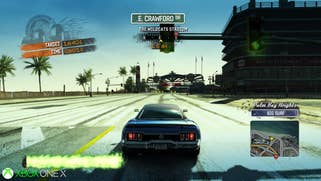
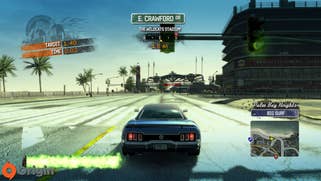

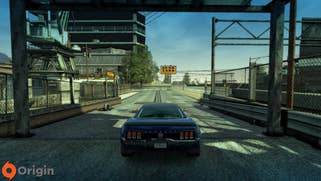

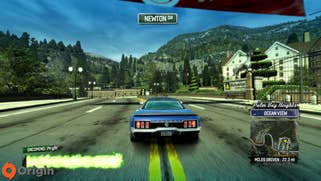
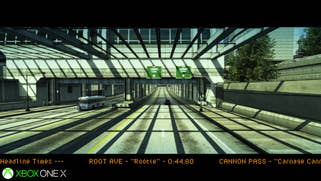
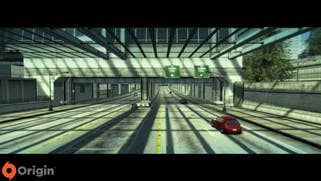
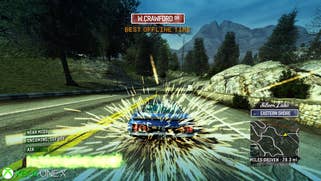
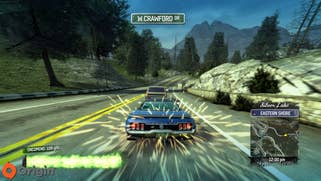
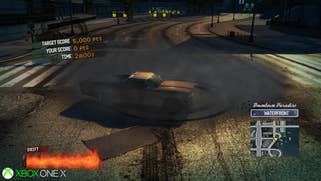
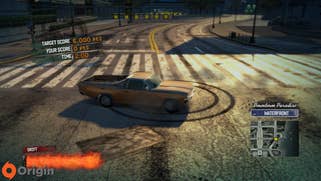
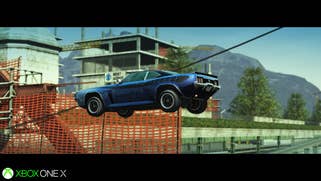
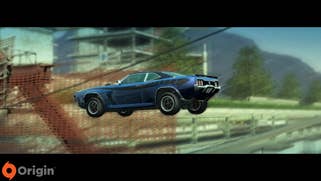


And speaking of the standard console, that's where the good news only continues. Not only is it s struggle to shake the hard 60 frames per second lock on the base Xbox, but the visual feature set appears identical to the X version - the only difference being native 1080p resolution instead of 4K. The same textures, filtering, shadows and effects upgrade are in situ, and it looks great - a clear upgrade over the original Xbox 360 version running under backwards compatibility (and yes, that does remain a perfectly viable way to play Paradise - it's just not as impressive visually).
In turn, this great turnout for the standard Xbox helps to address the one lingering question we have about the remaster - the quality of the PlayStation 4 version. At the time of writing, we only have the Xbox release via EA Access, so right now we can only speculate about the PlayStation editions. Even so, logic surely dictates that if the standard Xbox hands in the full X feature set at 1080p, at the very least its PS4 equivalent should be just as good.
Where things will get interesting is with the PS4 Pro edition - clearly there's a GPU deficit against Xbox One X, so it'll be fascinating to see what kind of 4K support Stellar Entertainment rolls out for Sony's supercharged console. Curiously, at max settings with 4x MSAA selected, the PC version couldn't sustain 4K60 on a Radeon RX 580 (which must surely be a driver issue) while GTX 1060 got closer with drops only in crashes (and with 8x MSAA to boot). The PC original is clearly scalable up to a point then, which makes the enhanced X version at native 4K quite impressive by comparison and makes us even more curious to see just how well the Pro compares. We'll update you with PlayStation analysis as soon as we can - hopefully before the game's Friday launch.




